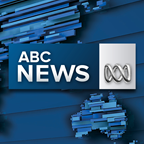
THE Reserve Bank believes the Australian dollar is still too high and that interest rates are best left on hold, rather than be cut further.
The minutes of the RBA’s December board meeting, released this morning, showed members said that the dollar needed to fall further to aid economic growth, especially considering recent significant falls in commodity prices.
The minutes also revealed that members want to keep the RBA’s cash rate unchanged at 2.5 per cent for the foreseeable future.
The RBA reiterated its view that the most prudent course of action was a period of rates stability in the minutes of its December meeting, but noted market expectations implied some chance of an easing of monetary policy during 2015.
The board members discussed the factors that might be producing such an expectation of rate cuts, but did not say what those factors were.
Expectations of interest rate cuts have surged after Australia recorded September-quarter economic growth of 0.3 per cent, less than half of market expectations.
As of yesterday, overnight indexed swaps were fully pricing a 25 basis point cut in interest rates by May 2015 and a 40 per cent chance of another cut by August.
Several high-profile forecasters, including chief economists at Westpac, National Australia Bank, Goldman Sachs, Deutsche Bank and AMP Capital expect interest rate cuts next year.
However, the board said the current stance of monetary policy continued to be appropriate for fostering sustainable growth in demand and inflation outcomes, consistent with the RBA’s target inflation band.
On the Australian dollar, the board agreed that further exchange rate depreciation was likely to be needed to achieve balanced growth in the economy.
The Australian dollar has fallen US5c to a four-and-a-half year low of US82.01c during the past two months. It gained slightly following the release of the minutes to be trading at US82.22c at 11:45am (AEDT).
It concluded the Australian dollar remained above most estimates of its fundamental value, especially considering recent significant falls in commodity prices.
“Mining investment was expected to decline sharply and resource exports were expected to grow strongly as the transition from the investment to the production phase of the mining boom continued,†the minutes said.
“Very low interest rates had supported activity in the housing market, which in turn was expected to support consumption.â€
The RBA board also expressed concern about subdued employment growth that was likely to weigh on consumer confidence and consumer spending for some time.
At the December meeting, the RBA held the official cash rate at a record low for the 16th consecutive month, expecting below-trend economic growth for the next several quarters.
The board also discussed the effects of recent policy announcements in Japan, where the Bank of Japan had “unexpectedly†announced an expansion of its monetary easing program, or quantitative easing.
The minutes reveal it expects the move to result in a “substantial increase†in measure of base money, and a reallocation of the Japanese government’s pension investment fund directed to foreign assets — resulting in further sizeable capital outflows from Japan in the period ahead.
“While the bulk of these were likely to be to the United States, Australia would probably see some significant flows as well, with consequent effects on exchange rates,†the board said.
Members also noted the European Central Bank’s decision to expand its balance sheet by around €1 trillion, which would increase the amount of liquidity in the market.
Overall, the board said the moves of the BoJ and ECB would result in total liquidity provided by major central banks increasing at a similar pace to that observed over recent years, taking over from the US, which had just ended its own program of quantitative easing.
The board concluded the outlook for the global economy had changed little in the month since its last meeting, with the growth of Australia’s major trading partners forecast to be a little above average in 2014 and 2015.
With AAP






 Add Category
Add Category